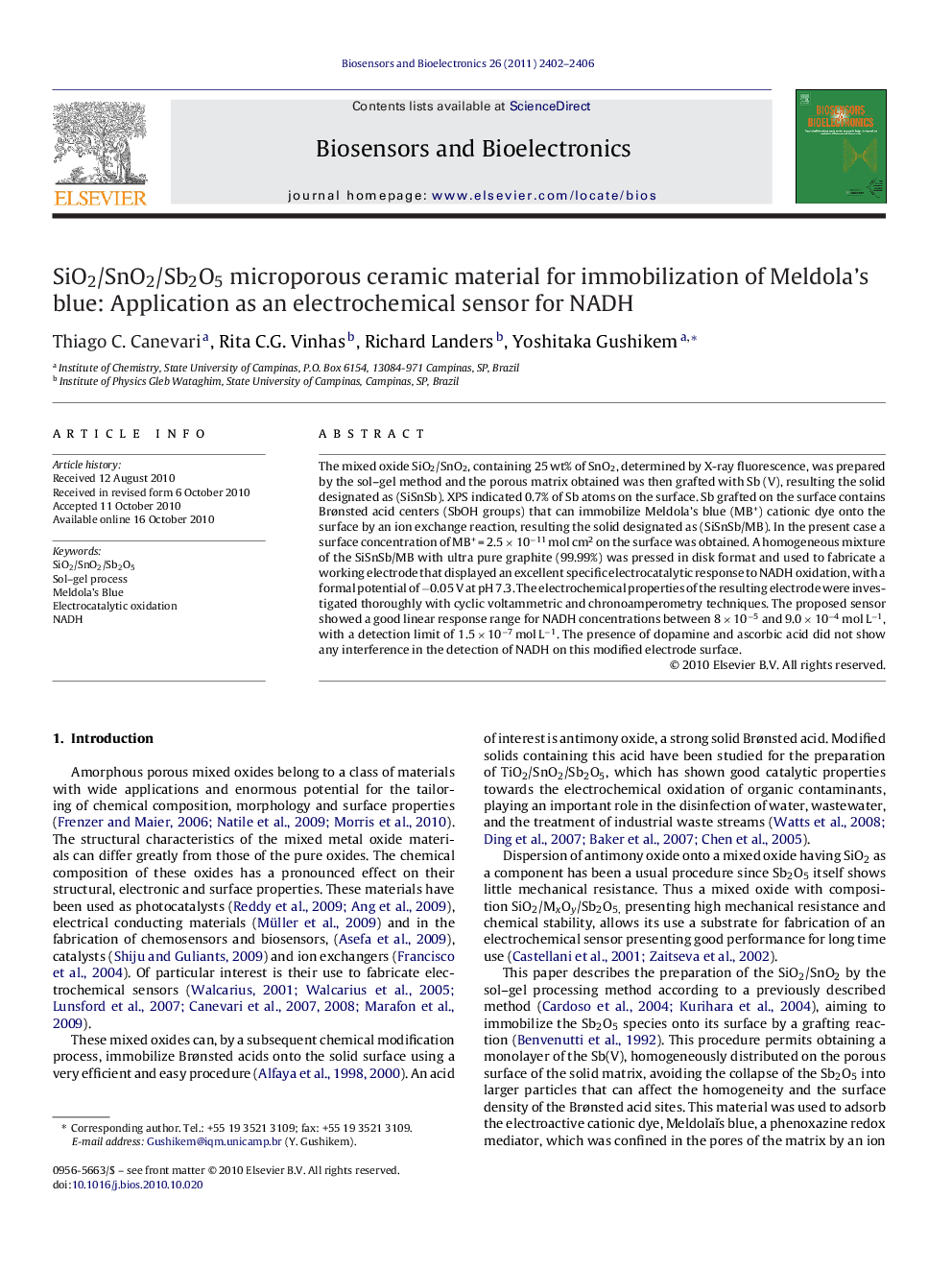| Article ID | Journal | Published Year | Pages | File Type |
|---|---|---|---|---|
| 868212 | Biosensors and Bioelectronics | 2011 | 5 Pages |
The mixed oxide SiO2/SnO2, containing 25 wt% of SnO2, determined by X-ray fluorescence, was prepared by the sol–gel method and the porous matrix obtained was then grafted with Sb (V), resulting the solid designated as (SiSnSb). XPS indicated 0.7% of Sb atoms on the surface. Sb grafted on the surface contains Brønsted acid centers (SbOH groups) that can immobilize Meldola's blue (MB+) cationic dye onto the surface by an ion exchange reaction, resulting the solid designated as (SiSnSb/MB). In the present case a surface concentration of MB+ = 2.5 × 10−11 mol cm2 on the surface was obtained. A homogeneous mixture of the SiSnSb/MB with ultra pure graphite (99.99%) was pressed in disk format and used to fabricate a working electrode that displayed an excellent specific electrocatalytic response to NADH oxidation, with a formal potential of −0.05 V at pH 7.3. The electrochemical properties of the resulting electrode were investigated thoroughly with cyclic voltammetric and chronoamperometry techniques. The proposed sensor showed a good linear response range for NADH concentrations between 8 × 10−5 and 9.0 × 10−4 mol L−1, with a detection limit of 1.5 × 10−7 mol L−1. The presence of dopamine and ascorbic acid did not show any interference in the detection of NADH on this modified electrode surface.
